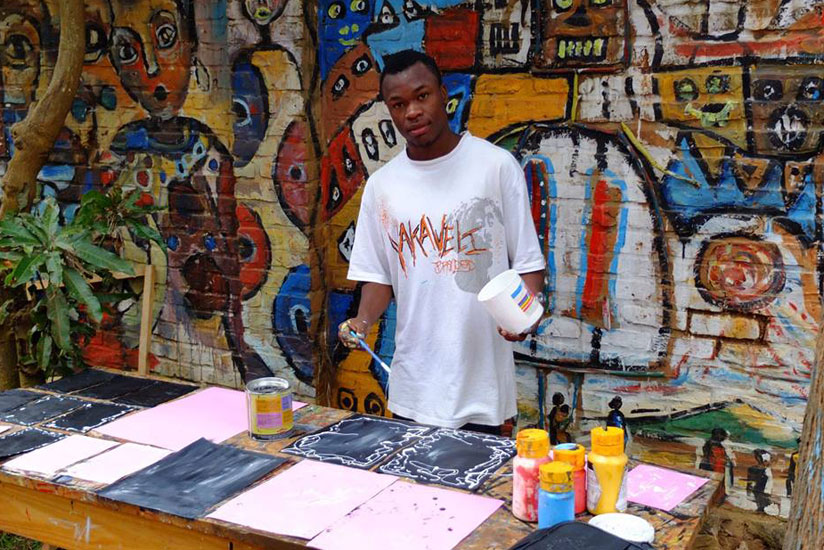Willy Karekezi was only one year old when the 1994 Genocide against the Tutsi took place. He says he only hears about the gory details of the atrocious massacre from fellow survivors who were older than him at that torrid time. When he tells me his age, I cross out one question I wanted to ask him:


Willy Karekezi was only one year old when the 1994 Genocide against the Tutsi took place.
He says he only hears about the gory details of the atrocious massacre from fellow survivors who were older than him at that torrid time. When he tells me his age, I cross out one question I wanted to ask him:
Where the Genocide found him and what was his experience. We immediately delve into art.
The bug of art bit him when he was a young boy in primary school but he cannot put a finger to the exact date. What he remembers is that during those formative years, he used to sketch cartoons in his exercise books that he saw from textbooks.
"But my teachers were doomsayers who used to blatantly tell me I would amount to nothing in life. I wish they could emerge here now and see that their prophesy failed,” he says with a chuckle.
I prod him on and he says that art has worked wonders in his life. Apart from being a multitalented artist who can paint realism, abstract art and surrealism pieces, do molding and sculpturing, Karekezi is a talented musician and the icing on the cake is that he’s also an arts teacher at Ecole Francais in Kiyovu.
His artistic odyssey has also taken him to different countries like Kenya, Uganda and Congo where, he says, he learned a lot how art is practiced in those countries.
Last year, he won a nationwide competition organised by China TV, Family TV and StarTimes which took him to China.
"I feel proud that through my passion and talent, I was able to represent my country internationally. I also learned a lot from fellow participants,” he says.
But how and where did all these start? I am inquisitive to know. At Uburanga Arts Centre in Kimihurura.
Karekezi says that when he was in his third year secondary school at Josephite Brothers, he was curious to discover what was happening inside the arts centre. When he gathered courage to enter one day, he met Jean Bosco Bakunzi, the founder of the centre; and he was armed with his artistic portfolio.
"When he saw them, it was love at first sight. He immediately invited me to work with him at the centre and I’ve never looked back.”
But there was one problem. His parents, though appreciative of his talent and passion, wanted him to finish school first. They refused to buy him the necessary tools and forbid him from visiting the centre again. But, he recalls, he resorted to sneaking in at Uburanga and surreptitiously paint at night.
On his view on art and how it can be used as a potent tool to change the society, he says, "Art is life since most of the things that you see, some of them idling around, is the work of art in different forms. Art dictates our life in a fundamental way that we are unaware of.”
He further says that he uses his art as a way of changing the society’s way of perceiving things. "When you see a painting depicting the virtue of peace and the folly of war, you just want to be part of it because society values the former and castigates the latter. And that’s how things should be.”
As part of that virtuous society, Karekezi says that just recently during the Liberation anniversary, he was part of artists who did live paintings to spread the message of peace and reconciliation in an event organized at Kimihurura.
But he laments that they still have a long way to go for Rwandans to embrace the true value of art, adding that even when they do their exhibitions, it’s the tourists who are always conspicuous with their large attendance.
He also has advice for the young: "Follow your passions and your dreams because, at the end of the day, it’s all about your life. You’re the captain of your ship.”
As a hobby, Karekezi reads a lot of books during his spare time. "I have to spare time for my other passion – reading,” he says.


